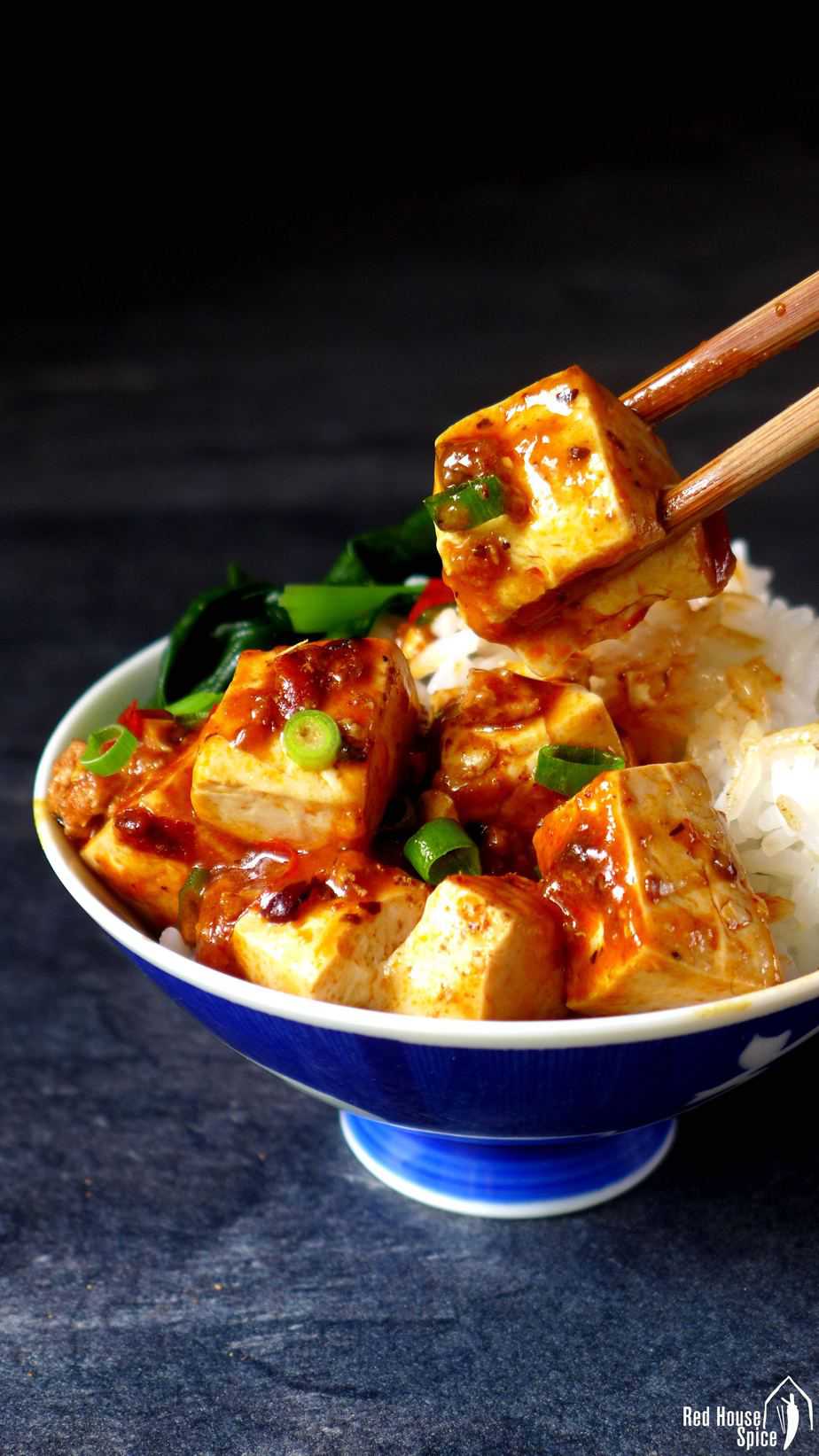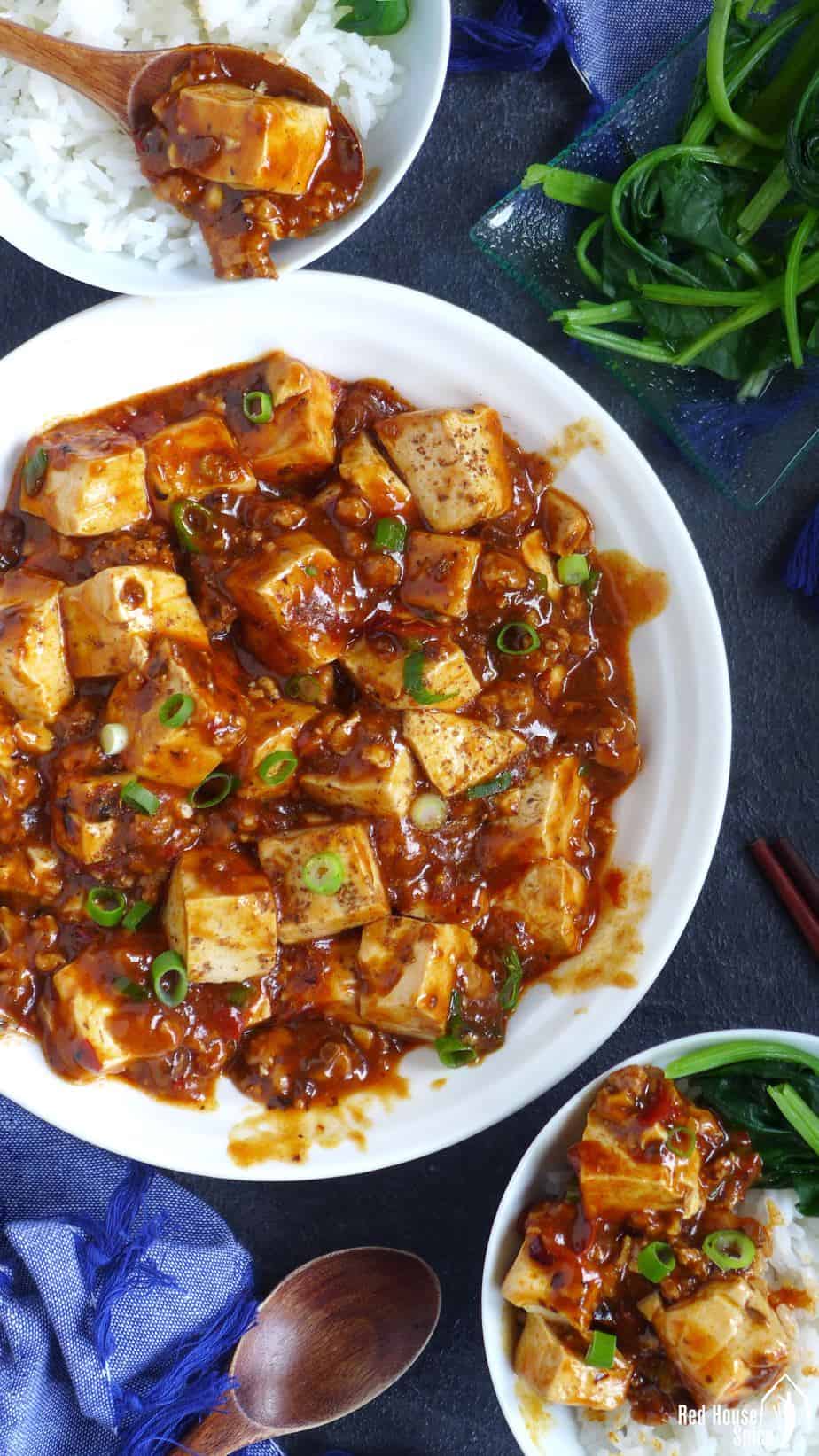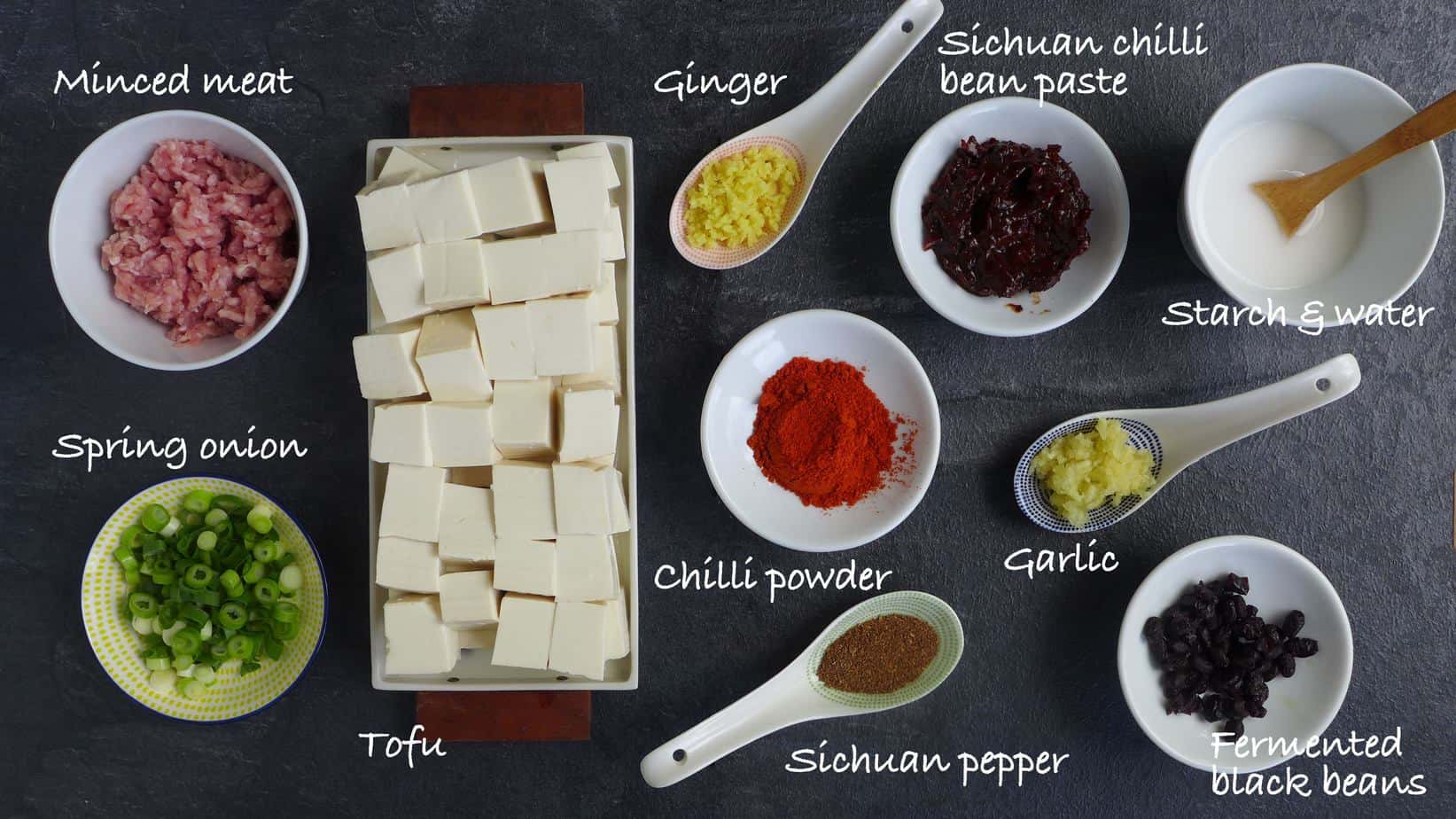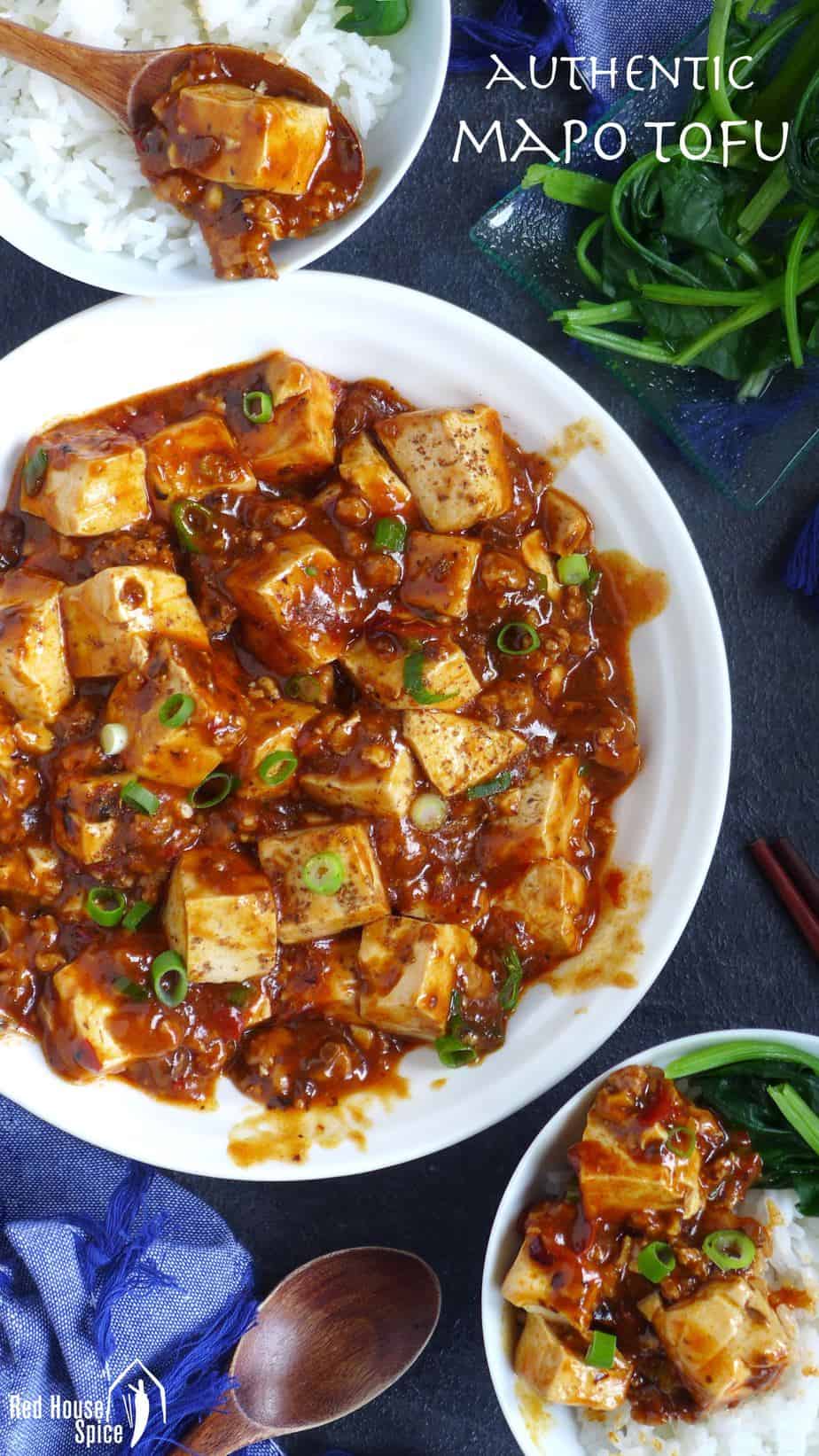Ma Po Tofu Use Beef or Pork

Tender tofu cooked in an aromatic and spicy sauce, accompanied by minced meat, Mapo tofu is one of the most popular ways to prepare tofu in China.

Once I asked a group of non-Chinese friends who had experiences of real Chinese food: "What is your favourite tofu dish?" They all answered: "Mapo tofu!" It didn't surprise me at all. Today I'd like to show you how to cook this classic dish the authentic way (without any western adaptation).
Why is it call Mapo tofu?
Tofu (aka Doufu, Bean curd) is one of my favourite ingredients. As a very healthy source of protein, it can be prepared in so many scrumptious ways: in salads, stir-fries, stews, soups, etc. It never fails to please my palate.
Mapo tofu (麻婆豆腐) is named after its inventor Mapo (means pockmarked elderly lady) who ran a small restaurant over a century ago in Chengdu, the capital of Sichuan province. It's a signature dish of Sichuan cuisine, presenting its characteristic flavour: Mala (麻辣), namely numbing and spicy.
Over recent years, Mapo tofu started appearing on the menus of oversea Chinese restaurants. Unfortunately, I'm disappointed most of the time (Many Chinese living aboard have similar complaints). What is often served are just plates of spicy tofu. In terms of the general flavour, the level of hotness, numbness and the texture, such dishes have little to do with what you should expect from authentic Mapo tofu.

Five key features of the dish
In fact, like many Chinese dishes, Mapo tofu is much simpler to prepare than it seems to be. Get the right ingredients and follow the instructions, then you will be on the way to success. For a better understanding of Mapo tofu, five Chinese characters are used to describe the key features of this dish:
麻/numbing
This particular taste/sensation comes from Sichuan pepper, a spice unique to Chinese cuisine. Use freshly ground Sichuan pepper when possible (Please refer to my post to learn how to grind Sichuan pepper properly). Shop-bought powder often tastes too mild.
辣 /spicy
Both of Sichuan chilli bean paste (aka spicy Doubanjiang) and chilli powder contribute to the spiciness. The latter is also used to enhance the reddish colour of the dish.
Different brands of Sichuan chilli bean paste may vary in saltiness, hotness and texture. Adjust the volume accordingly. I normally use Pixian Douban (郫县豆瓣), a well-known variety, which needs to be coarsely chopped prior to cooking.

香/aromatic
Apart from Sichuan chilli bean paste which makes the dish flavoursome, fermented black beans (aka black beans) also provides a particular aroma. Remember to rinse and chop them prior to cooking.
烫 /physically hot
Mapo tofu needs to be served hot for the best taste. However, since tofu holds heat very well, for the first few mouthfuls, I recommend that you break the tofu cubes apart with chopsticks before putting into your mouth.
嫩/tender
It's better to use Chinese soft tofu (嫩豆腐) for tender texture. The tofu I bought from Chinese shops in England is marked as "medium-firm". I found it great for this dish (Japanese-style silken tofu is not recommended). Make sure you blanch the tofu cubes in salty water first. This is to make the cubes less breakable. And you need to be gentle when handling them throughout the cooking process.

You can make it vegetarian too
In the authentic version of Mapo tofu, beef or pork mince are used to enhance the flavour. If you wish, skip it or replace it with vegetarian ingredients, such as shiitake mushrooms. Soak the mushrooms in water overnight then chop them into small pieces. Fry as usual.
Choose your own "Mala" level
In terms of the Mala(麻辣) sensation (the level of hotness and numbness), my Mapo tofu recipe is not adapted for non-Sichuanese tastes. You might find it too tangy if you are not accustomed to it. Please feel free to alter the amount of relevant ingredients. You may also add a little sugar to reduce the spiciness as well as the saltiness.



For the tofu
- 600 g soft tofu, 21oz
- ½ teaspoon salt
For the sauce
- 2 tablespoon cooking oil
- 1 teaspoon ginger, minced
- 100 g minced beef or pork, 3.5oz
- 1 teaspoon Shaoxing rice wine
- 2 tablespoon Sichuan chilli bean paste, see note 1
- 1 tablespoon fermented black beans, rinsed and chopped
- 1 tablespoon chilli powder, or to taste
- 4 cloves garlic, crushed
- 500 ml unsalted stock or water, 2 cups
- 2 tablespoon corn starch, mixed with 3 tablespoons water
-
Cut the tofu into 2.5cm / 1inch cubes. Gently slide the cubes into a pot filled with cold water. Add salt. Bring the water to a boil then simmer for a further 2-3 minutes. Drain and set aside.
-
Heat up the oil in a wok. Add ginger then leave to sizzle for 10 seconds. Add minced meat and rice wine. Stir fry until the meat becomes pale.
-
Stir in Sichuan chilli bean paste, fermented black beans, chilli powder and garlic. Fry until fragrant.
-
Pour in stock/water then bring to a boil. Gently slide in drained tofu. Leave to boil (uncovered) until the volume of the liquid reduces by one third.
-
Pour half of the starch & water mixture into the wok (stir well beforehand). Leave to boil for 10 seconds or so. Add the other half. Remove the wok from the heat when the sauce is thickened.
-
Sprinkle with spring onion and ground Sichuan pepper. Serve it hot with plain rice.
1. Different brands of Sichuan chilli bean paste (aka spicy Doubanjiang) may vary in saltiness, hotness and texture. Adjust the volume accordingly. Best to use Pixian Douban(郫县豆瓣), a well-known variety, which needs to be roughly chopped prior to cooking.
2. In terms of the level of hotness and numbing sensation, this recipe is not adapted for non-Sichuanese tastes. You might find it too tangy if you are not accustomed to it. Please feel free to alter the amount of relevant ingredients. You may also add a little sugar to balance the spiciness as well as the saltiness.
Serving: 1 serving | Calories: 529 kcal
Show me your dish or ask me questions @red.house.spice
Hope you find this recipe helpful. If you like Sichuan cuisine as much as I do, my blog is the right resource to follow. Tag me @red.house.spice on Instagram if you share a photo of your Mapo tofu. I'd love to see!
Have a yummy day!
![]()



Source: https://redhousespice.com/mapo-tofu-authentic-way/
0 Response to "Ma Po Tofu Use Beef or Pork"
Post a Comment